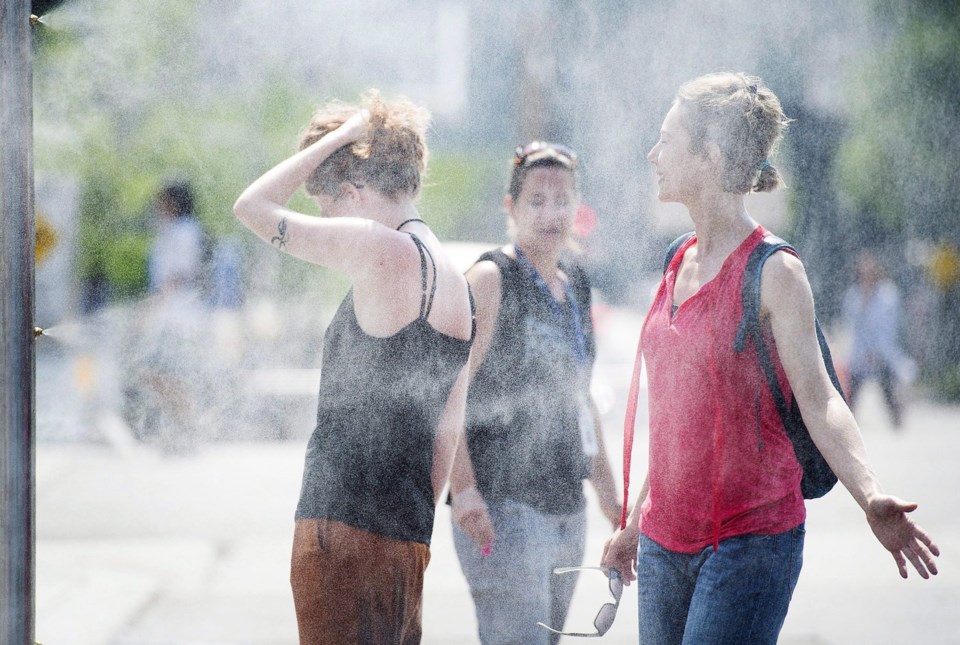Canada is expected to see a warmer-than-usual summer with uncertain precipitation levels in most provinces, based on Environment and Climate Change Canada's summer forecast.
Jennifer Smith, a warning preparedness meteorologist, said Tuesday that Atlantic Canada, Quebec, Ontario and northern Manitoba are especially likely — 100 per cent in some areas — to see a hotter than normal summer, though the odds are high for the rest of the country, too.
"There are a couple of cooler spots, most prominently along the Beaufort Sea in northwestern Canada, but over all the forecast leans toward a warmer summer across the country," Smith said.
Statistically, she said the above-average warmth may be skewed by extreme short-term heat waves. But in other cases, "it could be recurring short warm spells or just a subtle, consistent warmth that pushes seasonal averages up enough to nudge the stats."
At the same time, Smith said the agency's modelling couldn't come up with a reliable rain forecast for those same provinces over the summer, but much of Alberta, British Columbia and parts of Saskatchewan could see below-normal levels of precipitation.
"Summer precipitation is tricky to forecast because it's driven by scattered thunderstorms and local downpours, which are difficult to predict months in advance," she said.
"Just one big rainfall event can shift a seasonal total to above normal, even if most days are dry."
Bill Merryfield, a research scientist with Environment Canada, told reporters that the lack of spring rain, plus potentially drier conditions moving forward, means that all of western Canada is expected to be ripe for severe wildfires starting next month.
Conditions are only expected to worsen by August, Merryfield said, with most provinces west of Ontario expected to reach "well above average" levels for fire severity situations.
He said the forecast doesn't point to the number of wildfires that are expected. Rather, the forecast is meant to illustrate how likely a wildfire is to become severe after it ignites.
"Going into the summer Canada was already experiencing a severe early wildfire season," Merryfield said, adding that as of the end of last month, Canada saw triple the 10-year average in terms of area burned for this time of year.
Those early season wildfires have prompted the evacuation of thousands in both Saskatchewan and Manitoba, where crews are battling dozens of fires in both provinces.
Evacuations, although on a smaller scale, have also been ordered in British Columbia, Alberta and northern Ontario.
As of Monday, there were over 80 active wildfires in B.C. alone, with more than half listed as out of control.
Merryfield said human-induced climate change is a key influence on the warmer-than-normal temperature forecast, which then influences the wildfire severity expectation.
"Canada's average summer temperatures have warmed by about 1.8 degrees since 1948, which is about double the warming of the global average temperature during that period," he said.
"This long-term warming trend is a major contributor to the high forecast probabilities of above normal temperatures across Canada."
Health Canada says some of the best ways to stay safe from the heat are to reduce sun exposure as much as possible, stay hydrated and take cool showers or baths.
This report by The Canadian Press was first published June 10, 2025.
Jack Farrell, The Canadian Press



